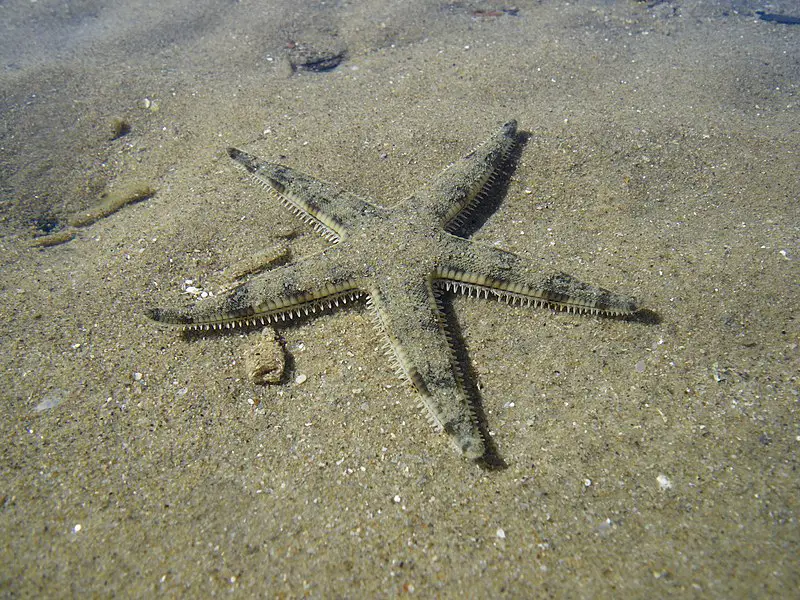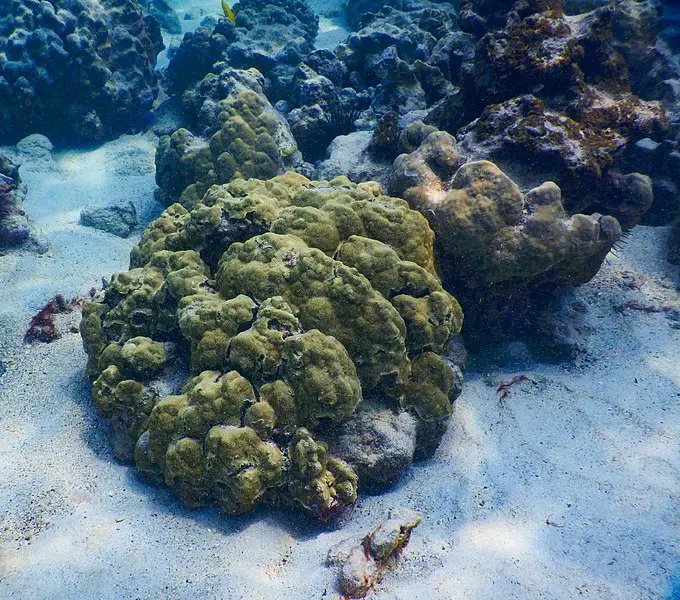There are a lot of ways to add variety to a tank and add interesting creatures. One interesting choice that really adds to the natural feel of a tank is a sand sifting starfish. Not only are they interesting to watch, but they also add some nice colors to your tank.
But if you’re going to add a starfish to your tank, then you’re probably curious how easy they are to care for, how long they live, and what they should eat? Just what is the lifespan of a sand sifting starfish?
Sand sifting starfish live for 3-5 years and are suitable for a reef-safe saltwater tank. They are peaceful and omnivorous, but in order to keep them thriving, they need to live in at least a 75-gallon tank.
Sand sifting starfish are fascinating to watch and are a great addition to saltwater tanks, but there’s a lot that goes into caring for your sand sifting starfish.
The rest of this article will discuss how long they live, how to care for them, and how to check for potential illnesses.
What Is a Sand Sifting Starfish?
Sand sifting starfish are echinoderms that dig through the sand for food.
They are extremely popular in saltwater aquariums since they do a great job of displacing any anaerobic bacteria that can get trapped under the surface of the sand and are therefore a great addition to help balance the water parameters of a tank.
Sifting sand starfish require stable water parameters to stay in good health and have a voracious appetite.
You’ll need a tank minimum of 75 gallons to keep these echinoderms satisfied with the amount of food they need. Munching on tiny organisms in the sand, starfish need that colony of organisms to stay strong and health so that they have a dynamic and steady food source.
How Long Do Sand Sifting Starfish Live in a Tank?
Sand sifting starfish live anywhere from 3 years to 5 years, but you’re more likely to keep your starfish happy and healthy for longer if you clean the tank regularly, keep the water parameters in good condition, and have the appropriate tank size.
You should also make sure you have no territorial or aggressive fish as tankmates who will pick on the starfish, causing injury or death.
Is My Sand Sifting Starfish Dying?
Starfish are pretty hardy and capable of losing a limb and surviving; however, they cannot live forever, and there are a couple of telltale signs that your starfish is dying.
You’ll begin to notice that they are more lethargic than usual, not moving much at all. You might also notice your starfish curling up into a ball, which is an alarming sign. Once a starfish has died, it will shrivel up and not move at all.
Most starfish respond to external stimuli, so if you poke it and it doesn’t respond, then it’s most likely died.
To keep your starfish in good health, you should pay attention to your water parameters closely, since starfish are very sensitive to changes in pH. You should keep the parameters between 7.5 and 8.5, but 8.2 pH is ideal.
Having a good pump and filtration system is especially important for keeping your starfish healthy, as a filter is the main component in removing toxins and harmful bacteria from the tank.
If you notice your starfish is losing its limbs, then it’s likely that the temperature in your tank is too high. Because the core temperature and limb temperature of a starfish differ, the starfish will detach its limbs in too-warm conditions.
As long as you adjust the temperature in due time, your starfish will recover and regrow its limbs.
Why Is My Sand Sifting Starfish on the Glass?
Starfish can sit on the glass at times to catch detritus and microfauna floating near the surface of the water. You may notice your starfish curling one of its arms back as though waving at you.
This behavior is meant to catch food floating through the water.
It may be an indicator that your starfish doesn’t have enough food in the tank, but if you’re operating with a correctly sized tank (75 gallons or bigger), then it’s likely that your starfish is just looking for a different snack for the day.
This behavior also seems to occur at random, but rest assured that your starfish isn’t trying to make a great escape; it’s a perfectly natural behavior.
They aren’t hurting themselves when they drop from the top of the tank, and the behavior is just their way of searching for food.
Can You Feed a Sand Sifting Starfish?
Voracious omnivores, sand sifting starfish will eat pretty much anything, but you should supplement their natural sand sifting diet with some other food sources. Good food sources include the following:
- Shrimp
- Mollusks
- Sea Stars
- Urchins
- Other invertebrates
Unfortunately, it can be difficult to get your starfish those extra meals that they need if you have other fish that eat the food as it sinks, so you’ll have to ‘overfeed’ your tank so that some extra food makes it to the bottom for your sand sifting starfish.
Just make sure not to overdo it such that there’s a lot of leftover food in your tank. Too much leftover food can cause an ammonia buildup, which is detrimental to the health of your tank.
Final Thoughts
Sand sifting starfish are a great addition to a lot of saltwater aquariums due to them being reef-safe, good cleaners, and compatible with many other fish.
These little guys roam around the tank looking for microfauna and detritus, shuffling through the sand of the tank searching for food.
They typically live 3-5 years, but they are very sensitive to changes in water parameter and conditions, so make sure your tank is of the appropriate pH level and temperature to ensure that your starfish isn’t suffering.
As long as you take good care of your tank, your starfish will take good care of your sand.


